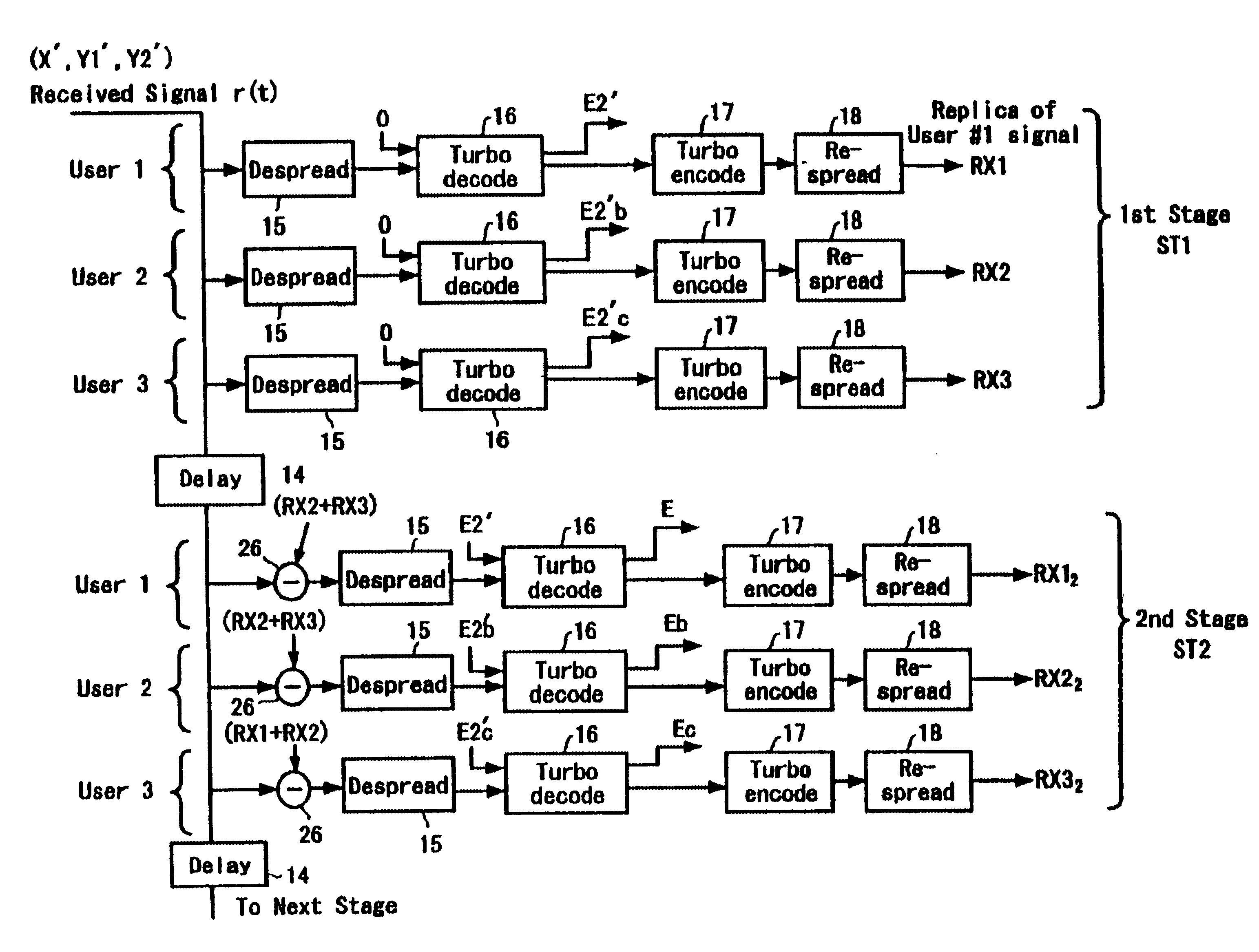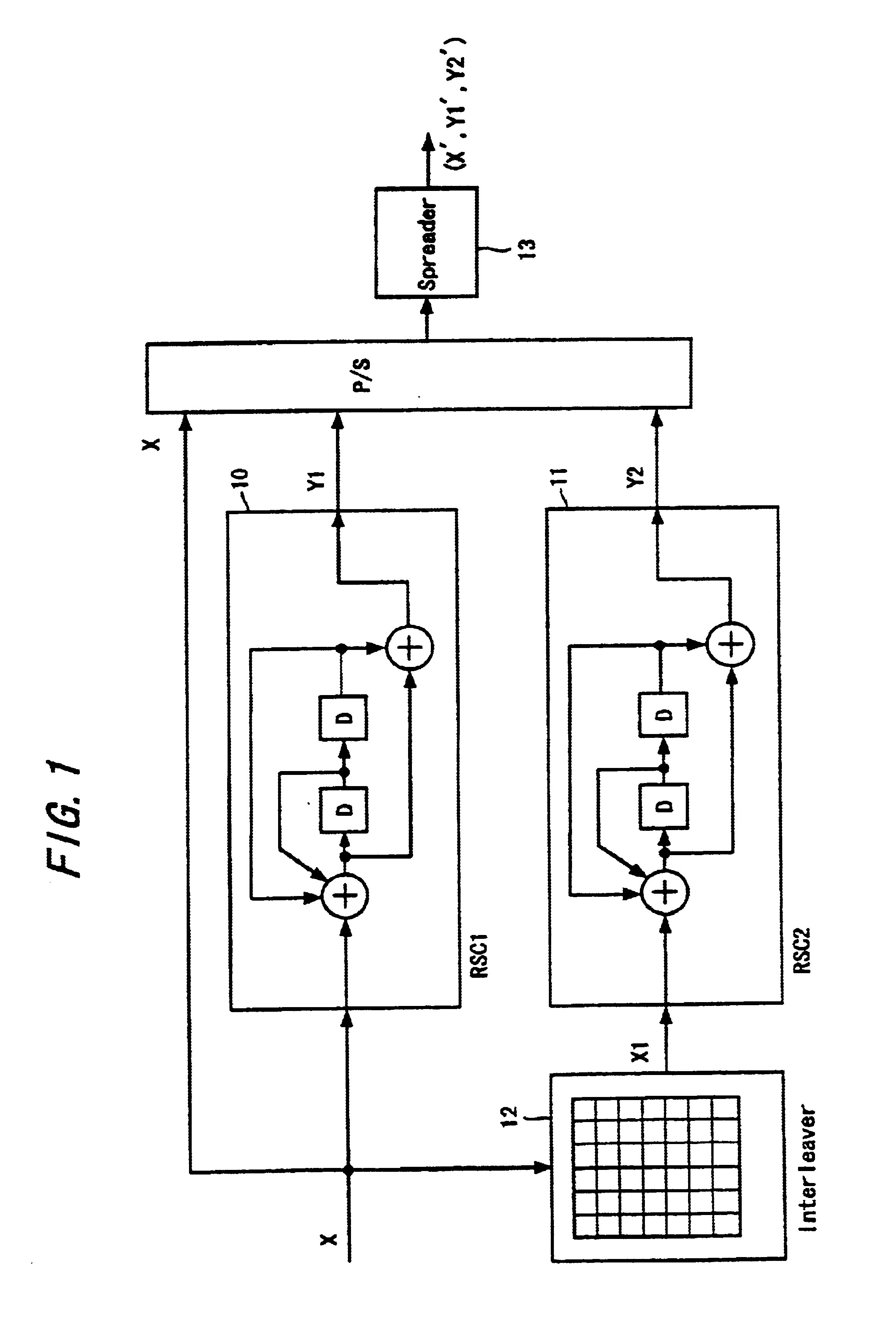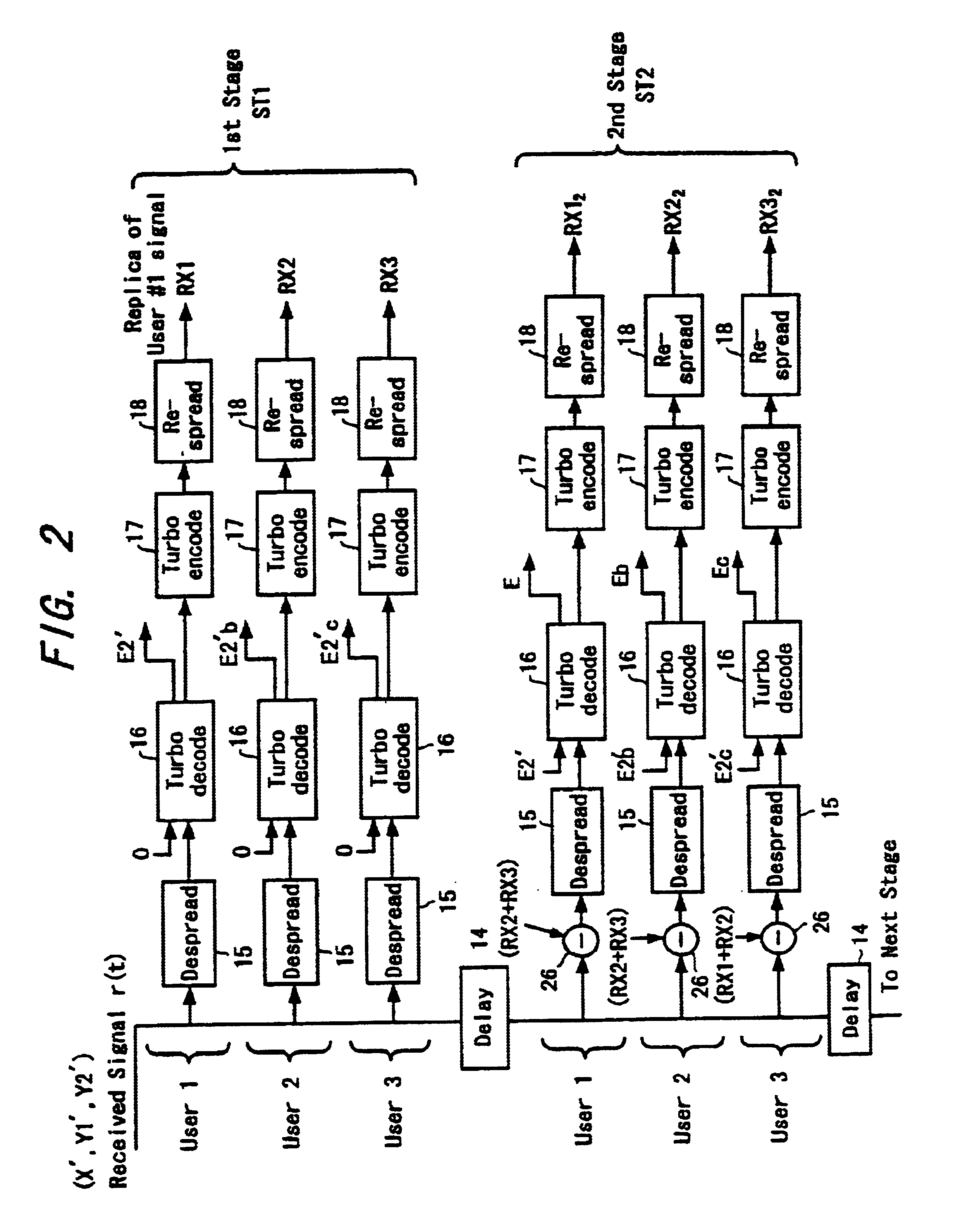Concatenation convolutional code decoder
- Summary
- Abstract
- Description
- Claims
- Application Information
AI Technical Summary
Benefits of technology
Problems solved by technology
Method used
Image
Examples
second embodiment
(The Second Embodiment)
[0088]Next, the second embodiment of the present invention will be described in detail with reference to FIG. 4. Here, the same components as in the above embodiment are allotted with the same reference numerals and the description will be omitted.
[0089]In the above first embodiment, the turbo decoding process at decoder 16 at each stage ST is performed once for every stage and then the operation goes to the subsequent stage ST. In this case, when replica signal RX is produced, the precision of generation of the replica signal may become lowered if the decoded data includes many errors, possibly leading to an increase in errors. To avoid this, in the present embodiment, errors of the decoded data are reduced by performing a predetermined number of feedback loops in the turbo decoding process at each stage so as to enhance the accuracy in producing replica signals.
[0090]FIG. 4 is a block diagram showing a process scheme in the present invention. The difference ...
third embodiment
(The Third Embodiment)
[0093]Next, the third embodiment of the present invention will be described in detail with reference to FIGS. 5 and 6. Here, the same configurations as in the above embodiments are allotted with the same reference numerals and the description will be omitted.
[0094]FIG. 5 is a block diagram showing the system configuration of the present embodiment. The difference from the configuration of the first embodiment resides in that decoders 16b output likelihood values LY1 and LY2 of parity data Y1 and Y2 (FIG. 6) and aweighting portion 27 is provided downstream of each turbo encoder 17 (FIG. 5).
[0095]Weighting portion 27 is a means which is disposed downstream of turbo encoder 17 and estimates the accuracy of the replica signal based on the likelihood information LLR (FIG. 6) obtained from the decoding process of turbo codes at decoder 16b and performs a weighting process on the replica signal. The error corrected data X2 having been weighted by weighting portion 27 ...
fourth embodiment
(The Fourth Embodiment)
[0103]Next, the fourth embodiment of the present invention will be described in detail with reference to the block diagram showing a system configuration of the present embodiment shown in FIG. 8. Here, the same components as in the above embodiments are allotted with the same reference numerals and the description will be omitted.
[0104]In each stage in the first through third embodiments, a spread received signal r(t) is received while the spread replica signals RX generated for individual user in the previous stage are subtracted. In this embodiment, received signal sequences r1 (X′, Y1′, Y2′) are reverse spread in the first stage ST1 and they are supplied as the input signals to the second stage ST2 and downwards.
[0105]Therefore, no despreader 15 as above is provided for the second stage and downwards. Since the input signals to the second stage and downwards are not spread signals, the replica signals of the transmitted signals produced at each stage do no...
PUM
 Login to View More
Login to View More Abstract
Description
Claims
Application Information
 Login to View More
Login to View More - R&D
- Intellectual Property
- Life Sciences
- Materials
- Tech Scout
- Unparalleled Data Quality
- Higher Quality Content
- 60% Fewer Hallucinations
Browse by: Latest US Patents, China's latest patents, Technical Efficacy Thesaurus, Application Domain, Technology Topic, Popular Technical Reports.
© 2025 PatSnap. All rights reserved.Legal|Privacy policy|Modern Slavery Act Transparency Statement|Sitemap|About US| Contact US: help@patsnap.com



